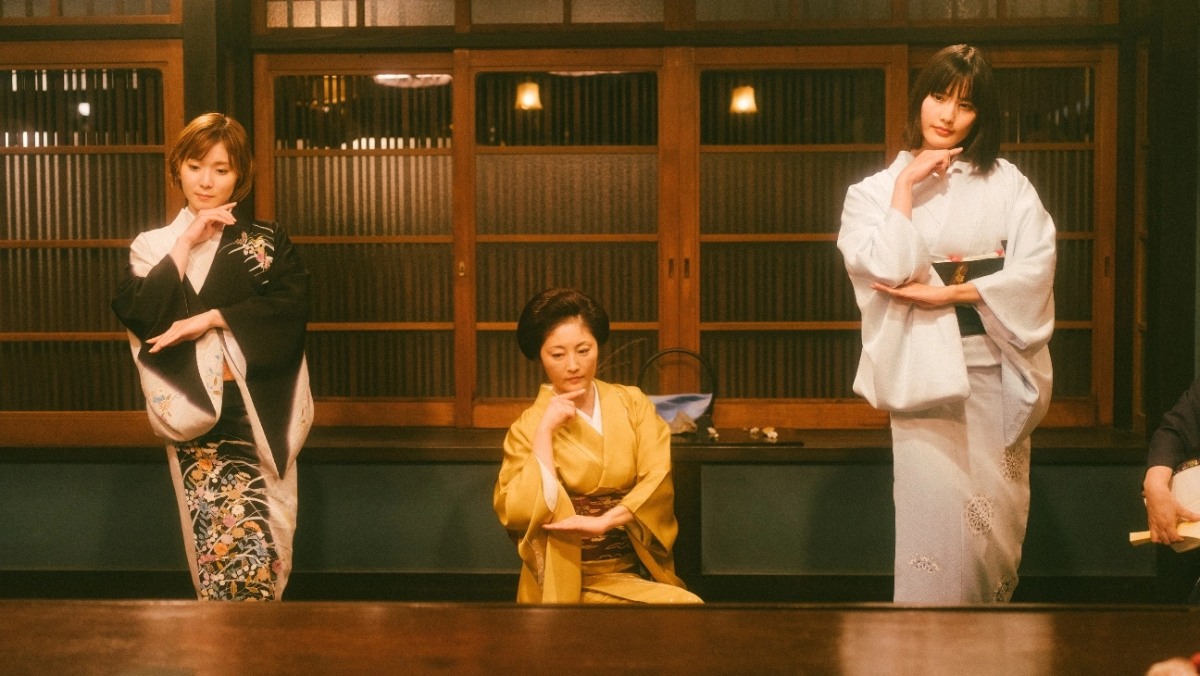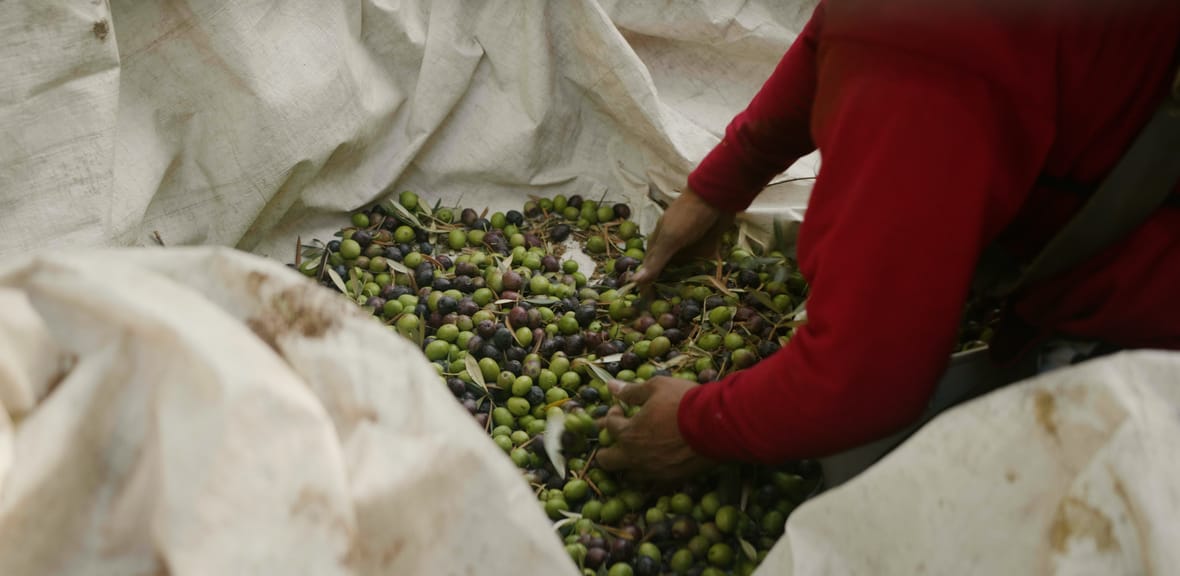
Hirokazu Kore-eda’s Netflix Show Is A Rich and Rewarding Experience
Jan 13, 2023
“You must show what’s unseen, but you cannot show too much either,” Mother Chiyo (Keiko Matsuzaka) explains to apprentice maiko Sumire (Natsuki Deguchi) about the delicate balance of expressing the story of a traditional mai dance. This same ethos permeates throughout the soft tone of the new Netflix series “The Makanai: Cooking for the Maiko House,” from acclaimed filmmaker Hirokazu Kore-eda. Like these traditional dances, the director brings a decidedly light touch to the series, never reveling in drama, but rather choosing to reveal deep emotions through the smallest of gestures.
READ MORE: ‘The Makanai: Cooking For The Maiko House’ Trailer: Hirokazu Kore-eda Serves As Showrunner For New Netflix Series Coming In January
Adapted from the manga series “Maiko-san Chi no Makanai-san” by Aiko Koyama, the show’s nine episodes follow Sumire and her best friend Kiyo (Nana Mori) over approximately one year as the two leave their hometown of Aomori for Kyoto to become maiko (an apprentice geisha, or geiko, as it is called in Kyoto). Each episode outlines one step in the process toward becoming a full-fledged geiko. While the explanations of these traditions may be too obvious for Japanese audiences more familiar with them, from an American perspective they are just enough to inspire curious viewers to google more information, but not so much that they ever feel like a lecture.
Leaving in the dead of winter, the teenage girls move into a house run by Mother Azusa (Takako Tokiwa), where they begin their apprenticeship. Early on it is clear that Sumire is destined for the same artistic greatness as the house’s shining star, Momoko (Ai Hashimoto). Kiyo, on the other hand, is less graceful but finds her passion as the house’s Makanai, or chef, who prepares the meals for all the women who reside there. Kiyo’s thoughtfully prepared meals, as well as her narration, anchor each episode and are shot with such care that it’s probably best not to watch the show on an empty stomach.
While the evolving relationship between Sumire and Kiyo is the show’s beating heart, every character in the ensemble’s life is fully fleshed out, with time dedicated to their own trials and tribulations. The most engaging of these side plots involve Azusa and Momoko, who, while at different stages in life, are both contemplating their previous life choices and what the future could hold for them.
Azusa attempts to balance her professional commitment with a growing attraction to Masahiro Tanabe (Arata Iura), a longtime customer at the ochaya. This development is further complicated by her sullen teenage daughter Ryoko (Aju Makita) who also has a crush, or in her words “unrequited love,” for the soulful gentleman. The show uses threads like this to explore the tension between tradition and modernization as it affects multiple generations throughout the series.
Unlike Kabuki, which after a slight setback after World War II bounced back to become the most popular traditional style of Japanese drama and was even proclaimed one of UNESCO’s intangible cultural heritages in 2008, the traditional art of geisha/geiko continued to struggle to find its place in modern Japanese society until it achieved greater awareness thanks to the internet and an increase in tourism in the mid-2000s. Sumire and Kiyo had decided to become Maiko after a school trip to Kyoto the previous year. This tourism is also critiqued in a scene where Momoko is bombarded by tourists for photos taken with cell phones, while an older gentleman pontificates about the artistry of traditional photography.
This tension is also beautifully expressed in one episode in which zombie movie fan Momoko writes a new mai entitled “Maiko of the Living Dead” for a festival, insisting that they bend some of the “obsolete rules that have no meaning” so her younger “sisters” can perform on stage with her. Hashimoto gives a compelling performance as Momoko, oscillating between her love for the artistry to which she’s dedicated her life and both her desire for the independence of the modern age, but also her love for her boyfriend who plans to move to Tokyo to become an architect. When he blithely says he thought she always wanted to quit her job, she replies that she was destined for it. How do you stick to your destiny when so many other forces are pulling you in every other direction?
Equally interesting is the contrast between the stoic Sumire and the exuberant Kiyo. In Kyoto, each girl finds what they presume is their destiny in traditional arts, each blossoming as they find constructive ways to express their passion. Kore-eda treats each vocation with the same reverence, finding as much beauty in the preparation and placing as much importance on the expression of love through Kiyo’s cooking as he does through Sumire’s lessons in the maiko arts.
Kiyo cannot help but broadcast every feeling she has through her sunny smile, shining eyes, and exuberant body language. Mori excels at expressing Kiyo’s joy while discovering new pleasures each day as she shops for fresh ingredients and cooks dishes the girls of the house describe as “nostalgic” and “ordinary, but comforting”.
Deguchi is tasked with demonstrating Sumire’s journey through a stifling of her emotions. When Kiyo is told she will never be a maiko, it is Sumire who is distraught. When Sumire’s disapproving father appears in an early episode, she has an outburst of anger unbecoming a maiko. Yet through Azusa teachings and Momoko’s mentorship, she learns how to control these emotions and express them through her dance.
While they are magnificent in exploring their individual journeys, Deguchi and Mori also have excellent natural chemistry together. As the two girls come of age within their respective trades, so deepens their already unbreakable bond. The yearly structure of the series works well in showcasing this growth, allowing for Kiyo to learn about the seasonality of food in Kyoto from traditional food vendors and Sumire’s progression in learning the traditional arts of the maiko and the seasonal festivals associated with the profession.
Although the finale is a satisfying enough ending for the journey of Sumire and Kiyo, additional seasons would allow for threads left dangling for the various supporting characters to be further explored. Either way, every episode of “The Makanai: Cooking for the Maiko House” is crafted with such precision and care that even a brief visit to its world proves itself to be a rich and rewarding experience. [A-]
Publisher: Source link
Jenna Ortega Wore A Glass Dress That Has To Be Seen
"Sometimes there's pieces of it that are poking my ass."View Entire Post › Disclaimer: This story is auto-aggregated by a computer program and has not been created or edited by filmibee.Publisher: Source link
Mar 30, 2025
Elon Musk Sells X, Formerly Twitter, for $33 Billion to His AI Startup
Elon and the singer dated on-and-off for four years, starting in 2018. In September 2021, Elon told Page Six that he and Grimes "are, I'd say, probably semi-separated," adding, "It's mostly that my work at SpaceX and Tesla requires me…
Mar 30, 2025
Meghan Markle, Gwyneth Paltrow Hit Back At Feud Rumors
Speaking to Vanity Fair just last week, Gwyneth said that she hadn’t had the opportunity to become friends with Meghan, but added: “I mean, I’ve met Meghan, who seems really lovely, but I don’t know her at all — maybe…
Mar 29, 2025
How Joshua Jackson Feels About His Daughter Watching Dawson’s Creek
When it comes to his daughter watching Dawson’s Creek, Joshua Jackson is hoping she paces herself. The 46-year-old—who shares Juno, 4, with estranged wife Jodie Turner-Smith—recently shared some insight into when he might allow his daughter to tune into…
Mar 29, 2025











